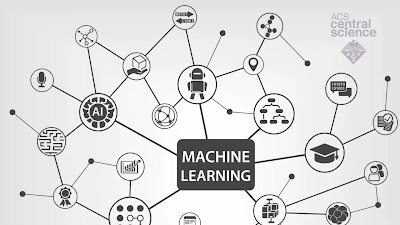Machine Learning Made Simple: A Beginner’s Guide to the Future of Technology
In a world driven by data, machine learning has become one of the most exciting and powerful technologies shaping our future.
Machine learning (ML) is a branch of artificial intelligence (AI) that enables computers to learn from data and improve over time without being explicitly programmed. It's the technology behind many of the tools and apps we use every day—from Netflix recommendations to virtual assistants like Alexa. In this guide, we’ll break down what machine learning is, how it works, its real-world applications, and how you can begin learning it today.
The Basics: How Does Machine Learning Work?
At its core, machine learning is about teaching computers to learn from data without being explicitly programmed.
Machine learning systems use algorithms to identify patterns in data and make predictions or decisions. The process typically involves feeding data into a model, allowing it to learn from that data (called "training"), and then using the trained model to make predictions or classifications when new data is introduced.
Key Types of Machine Learning
Machine learning isn't one-size-fits-all; it comes in different types based on how machines learn from data.
Here are the three main types:
-
Supervised Learning: The model is trained on labeled data (where the correct answers are known). It’s used for tasks like spam detection and image recognition.
-
Unsupervised Learning: The model finds patterns or groupings in data without any labels. It’s often used in customer segmentation and market analysis.
-
Reinforcement Learning: The model learns by trial and error, receiving rewards or penalties. Think of how a self-driving car learns to navigate traffic.
Common Algorithms You Should Know
Behind the scenes of machine learning are powerful algorithms that help computers make sense of complex data.
Some popular ones include:
-
Decision Trees: Visual models that split data into branches to make decisions.
-
Neural Networks: Loosely inspired by the human brain, great for tasks like image and speech recognition.
-
Support Vector Machines (SVM): Used for classification by finding the best boundary between data points.
-
K-Means Clustering: Groups data into clusters based on similarities.
-
Random Forest: An ensemble of decision trees that improves prediction accuracy.
Real-World Applications of Machine Learning
From your email’s spam filter to virtual assistants like Siri, machine learning is already part of your everyday life.
Some fascinating applications include:
-
Healthcare: Predicting diseases, analyzing X-rays, and personalizing treatment plans.
-
Finance: Detecting fraudulent transactions and automating trading strategies.
-
Marketing: Targeted ads, product recommendations, and customer behavior analysis.
-
Autonomous Vehicles: Helping cars detect objects, recognize traffic signs, and make decisions in real-time.
Benefits and Challenges of Machine Learning
While machine learning offers transformative possibilities, it also brings along certain limitations and concerns.
Benefits:
-
Increases efficiency and automation
-
Improves decision-making accuracy
-
Enhances personalization in services
Challenges:
-
Requires large, quality datasets
-
May inherit biases from data
-
Can be difficult to interpret (black-box models)
-
Raises ethical concerns around privacy and accountability
The Future of Machine Learning
As technology advances, machine learning will play an even bigger role in shaping industries and society.
Some upcoming trends include:
-
AutoML: Automating the ML pipeline to make development easier
-
Ethical AI: Ensuring fair, accountable, and transparent algorithms
-
Edge ML: Running ML on local devices (like smartphones) for faster, private processing
We’re only scratching the surface of what machine learning can do.
How You Can Learn Machine Learning
You don’t need a PhD to start learning machine learning, just curiosity and the right resources.
Here’s how to begin:
-
Online Courses: Try platforms like Coursera, edX, and Udacity.
-
Books: “Hands-On Machine Learning with Scikit-Learn, Keras, and TensorFlow” is a great place to start.
-
Programming: Learn Python and libraries like Scikit-learn, Pandas, and TensorFlow.
-
Practice: Use datasets from sites like Kaggle to build your own models.
Conclusion
Machine learning isn’t just a buzzword, it’s a powerful tool that’s reshaping the way we live and work.
From transforming industries to powering everyday conveniences, machine learning is at the heart of technological progress. Whether you're curious about how it works or eager to build your own models, there's never been a better time to dive into this exciting field.
Frequently Asked Questions (FAQs)
Q1: What is the difference between AI and machine learning?
AI is the broader concept of machines performing tasks that typically require human intelligence, while machine learning is a subset of AI focused on learning from data.
Q2: Is machine learning hard to learn?
Not necessarily! With the right resources and consistent practice, beginners can learn the basics of machine learning within a few months.
Q3: Do I need to know programming to learn machine learning?
Yes, basic programming (especially in Python) is essential for working with machine learning models and data.
Q4: What are some real-world uses of machine learning?
Machine learning is used in healthcare for diagnostics, in finance for fraud detection, in marketing for recommendations, and much more.
Q5: Can I start learning machine learning for free?
Absolutely. Many platforms like Coursera, Google AI, and Kaggle offer free courses and datasets to help you get started.






Comments
Post a Comment